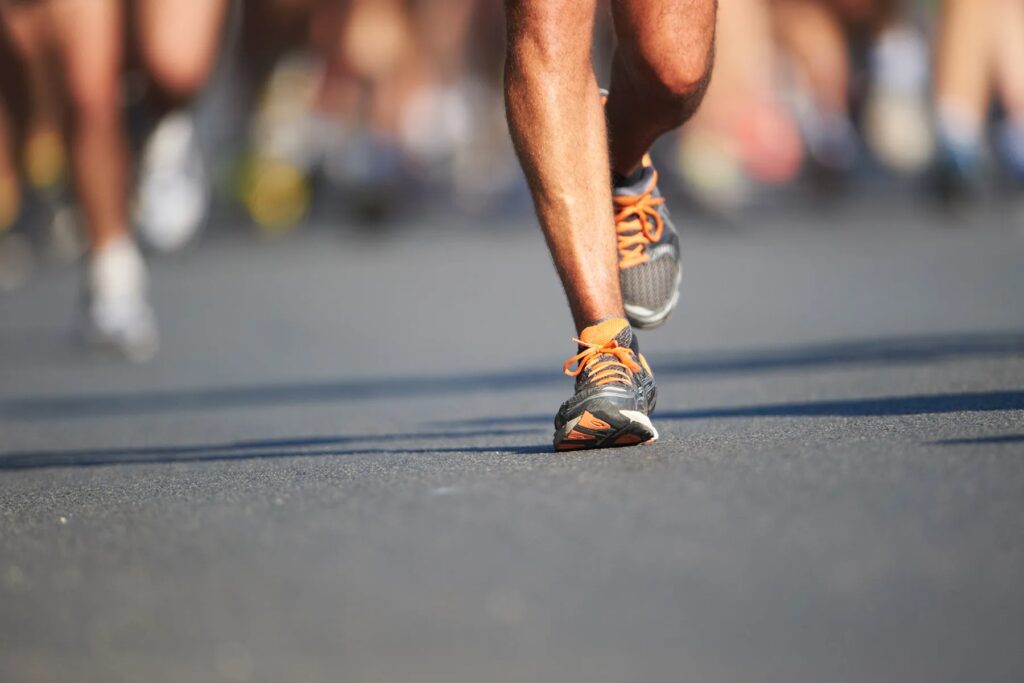March 22, 2023 — Long-distance runners are often warned that they are wearing out their joints. But running distance, frequency, and speed are not associated with an increased risk of osteoarthritis, new research says.
Osteoarthritis is caused by the breakdown of cartilage in joints, and it is the most common type of arthritis. Over 32.5 million U.S. adults have osteoarthritis, according to the CDC.
It has generally been thought that running could increase the risk of osteoarthritis because it puts more load on joints than walking or standing, said Grace Hsiao-Wei Lo, MD, assistant professor of immunology, allergy, and rheumatology at the Baylor College of Medicine in Houston, who was not involved with the work. Research in this area has had mixed results: A 2017 analysis of multiple studies found that competitive runners did have higher rates of arthritis than recreational runners, while another study Lo conducted found runners did not have an increased risk of knee osteoarthritis compared to non-runners. A 2018 study showed that marathon runners had lower instances of arthritis than the general population.
In this new study, researchers surveyed 3,804 runners who participated in the 2019 or 2021 Chicago Marathon about their running history, average mileage per week, and average running pace. The survey also asked about known risk factors for osteoarthritis including weight, family history of arthritis, and past injuries of the knee or hip that prevented running.
Runners, on average, were about 44 years old and ran about 28 miles per week. The largest proportion of respondents had completed between two to five marathons (37.3%), around 21% respondents had finished six to 10 marathons, and 17% were running their first marathon. Study participants had an average of 15 years of running experience, 1,892 reported a previous hip or knee injury, and 413 had underwent knee or hip surgery. Overall, 36.4% reported experiencing hip or knee pain in the past year and 7.3% had been diagnosed with arthritis.
Researchers found that there was no association risk of osteoarthritis and weekly mileage, years spent running, number of marathons completed, or running pace. Respondents who had undergone knee or hip surgery or had a previous hip or knee injury that prevented running were most likely to have arthritis. Family history of arthritis, higher body mass index (BMI), and older age were also tied with increased risk of the condition.
The news should be encouraging for runners, said Matthew Hartwell, MD, an orthopedic surgeon at the University of California, San Francisco, who led the research. If someone does not have injuries or surgeries that keep them from running, “you can still continue to run,” he said. “There may not necessarily be this dose response relationship where the more you run, the more you break down your knee or your hip.”
Still, 24.2% of runners reported that their doctor had advised them to cut down their mileage or stop running altogether. Most runners (94.2%) said they planned to run another marathon.
“The results of this study are consistent with the experiences of many lifelong runners and observations of sports medicine professionals that osteoarthritis is not an inevitable consequence of distance running,” said Brett Toresdahl, MD, a sports medicine doctor at the Hospital for Special Surgery in New York City, who was not involved with the study.
Still, he emphasized that more research is necessary to understand if running contributes to the risk of developing osteoarthritis. The participants in the study were current marathoners, he said, so it is likely they have healthy joints that can tolerate running longer distances.
“If there is a subset of people who have joints that are negatively affected by running, they wouldn’t likely be registering for a marathon,” he said in an email interview. Lo said that comparing these marathoners to a non-running group would also help show if running can be harmful to joints.
While the research does not answer the question of whether running can lead to osteoarthritis, it helps show the need for long-term research on how running affects joints overtime and general health.
“It may take time for the medical community to move beyond, ‘if it hurts, don’t do it,’ and reflexively advising against high-impact exercise when someone starts to develop osteoarthritis,” Toresdahl said.

